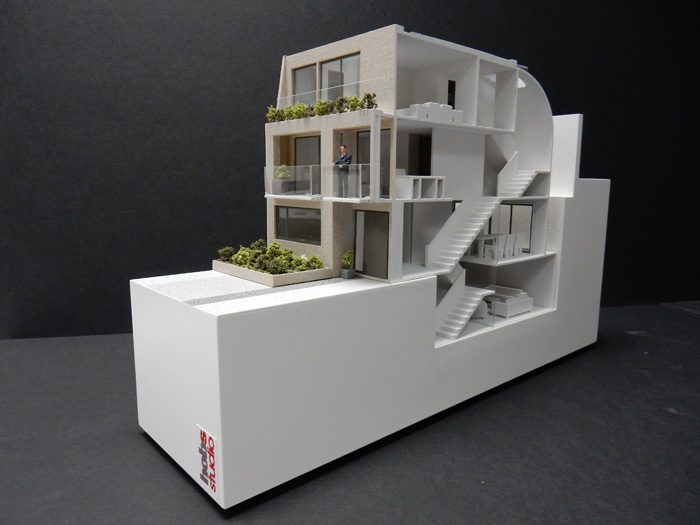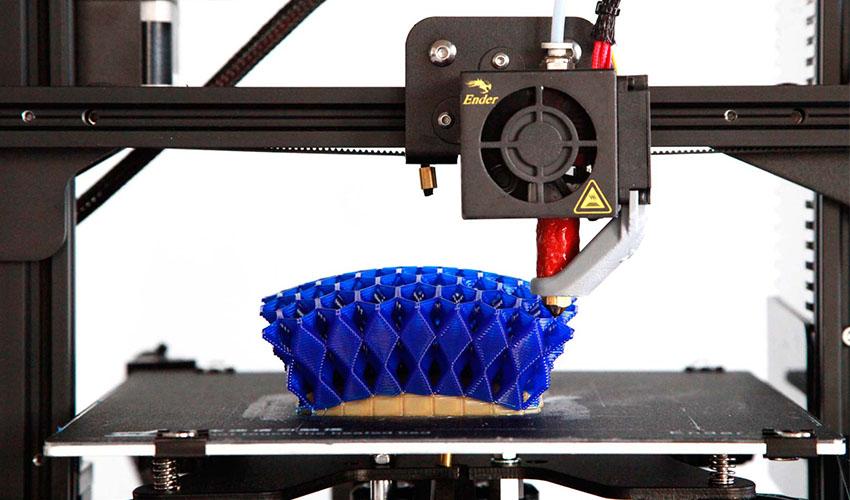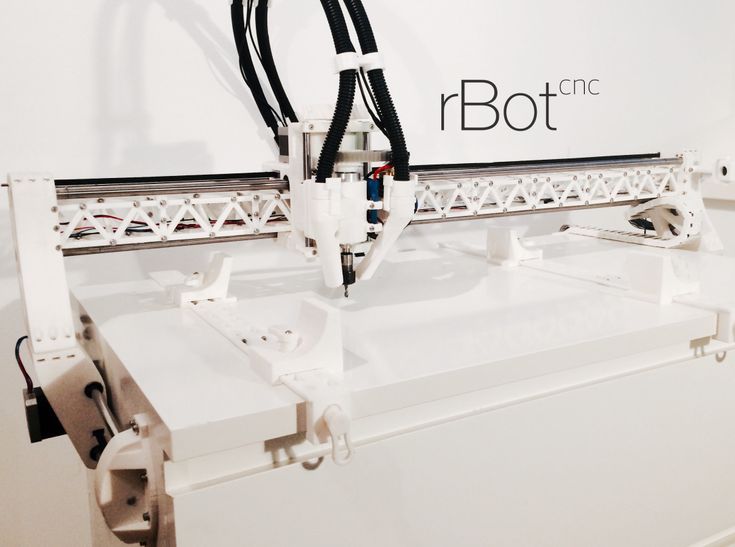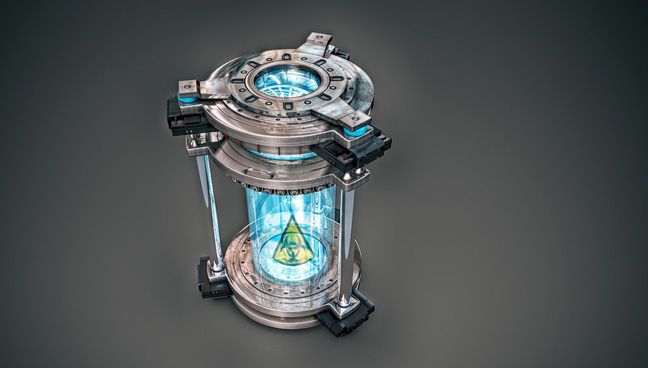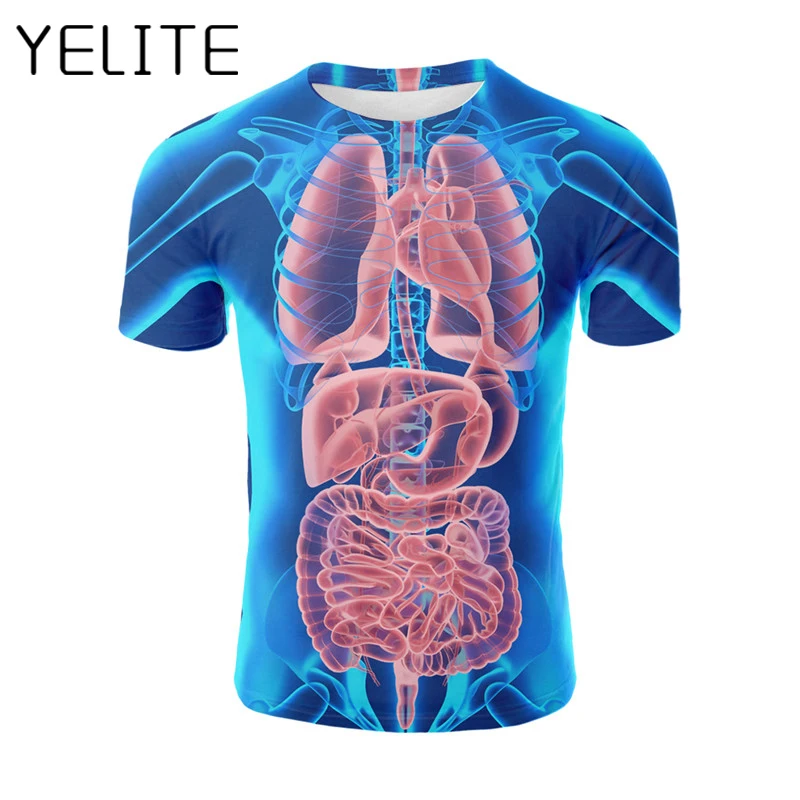3D printer underextrusion
How to fix Underextrusion
The most common printing issue in 3D printing. It consists of a lack of extruded material in the printed part that will show as missing layers or spongy prints. In this article, you will learn how to fix this issue
What is Underextrusion and why it happens
Underextrusion, as the name states, happens when the hotend extrudes less filament than desired. This issue directly affects the quality of the printed part, making it look rough, incomplete, and weaker than usual. There are many factors that can make this happen.
| We recommend using BCN3D filaments with our 3D printers. The default BCN3D Stratos profiles for BCN3D filaments are tailored by our Lab to deliver the best quality and reliability for your prints, so if you find underextrusion in one of our filaments, it's possible that the filament simply needs to be dried, or that there's a problem in the hardware itself. |
How to fix it
Being that this underextrusion has many different causes, troubleshooting it can be complex. Here's a list of all the causes and ways you can resolve them. If one method does not solve the issue, move on to the next one.
1. Update BCN3D Stratos
BCN3D Stratos is constantly updated with new profiles that improve the quality of the service. Pay attention to the release of new versions of BCN3D Stratos, and make sure to keep it updated.
To know how to download and install Stratos, visit this article: BCN3D Stratos.
2. Update the Firmware of your printer
A printer with outdated firmware can have some bugs that may cause underextrusion. To upgrade the printer firmware, click on the picture corresponding to your printer type to check the corresponding article:
| How to update the firmware | |||
3.
 Adjust the printing profile for your material
Adjust the printing profile for your materialTo avoid underextrusion, we recommend the default profiles in Stratos. These profiles are made to ensure the best print quality. If you are experiencing underextrusion with our material while also using our default profiles, go to the next point.
If you are using custom profiles or filaments from a different brand, note that there are some factors that can also cause underextrusion:
- Printing Temperature: Normally if you find underextrusion, the first thing to look at is the printing temperature. To find the right temperature, you can print a temperature tower test and change the temperature until you find the best quality.
- Printing Speed: If the printing speed is too high, you'll notice that the hotend is not able to extrude enough material. Printing at 50mm/s is generally good for ABS, PLA, and PET-G, while other filaments may require slower speeds.
- Retraction Settings: Retraction is a feature in which the filament is pushed out of the nozzle a bit to prevent oozing during travel.
 If the number of retractions, the retraction distance or speed is excessive, you might find gaps appearing on the walls of the print or experience hotend clogs.
If the number of retractions, the retraction distance or speed is excessive, you might find gaps appearing on the walls of the print or experience hotend clogs. - Take into account that underextrusion also depends on the filament and room humidity, room temperature, and manufacturing defects.
- For third-party materials: feel free to contact their manufacturer to get a printing profile for your filament, they know their filaments more than anyone else.
To prevent other issues with our filaments, check the following tips and tricks articles for each material:
4. Check the bowden tubes
The bowden and the filament are in constant friction. Occasionally an excess of friction can stop the filament and cause underextrusion. Check the bowden and whether it is bent or has a bad shape.
If this is the case, contact us or your reseller of choice to get a new bowden tube.
5. Check the cooling of your hotend
An excess of temperature in the printing head can cause a clog in the hotend, this will cause a gradual underextrusion along with the print until no filament is extruded.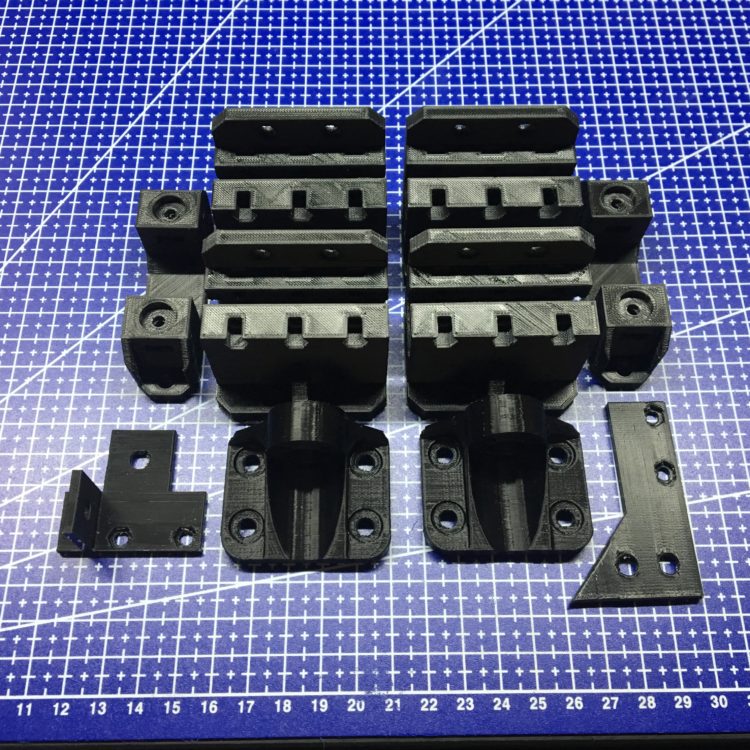 Check if the cooler fans are clean and use a vacuum cleaner or a brush to ensure that nothing is blocking the fan.
Check if the cooler fans are clean and use a vacuum cleaner or a brush to ensure that nothing is blocking the fan.
- To check if the fans are working properly, click on the picture corresponding to your printer type:
| How to check the operation of the cooler fan | |||
- In some cases, room temperature can influence, especially with PLA. Check that the room temperature is not over 25ºC and there's correct airflow in the room.
6. Clean or change the Hotend
A constant underextrusion throughout the piece shows that the issue is likely located in the hotend, specifically if you use different materials in the same hotend because it can clog over time, sometimes this is accompanied by a repetitive clicking noise. You should always clean the hotend with nylon every time you change material types.
- Click on the picture corresponding to your printer type know how to clean or unclog the hotend:
If the problem persists, the hotend is probably damaged. Try to swap the hotends and print, if the problem changes to the other side, you will need to swap it out for a new one. The following articles have information about this process:
| How to change the hotend | |||
- Warning! Hardened steel hotends shouldn't be used for non-abrasive materials like PLA, ABS, PET-G, TPU, etc. For these materials, it's best to use brass-tipped hotends.
If the hotend is burnt or damaged, it is likely that the extruder board has a problem. Continue to the next section to find more information about this.
7. Check the Extruder Board
This component sends the signals that control the hotend temperature and the funcioning of the fans. If the extruder board doesn't work properly, it can lead to random underextrusion and overheating issues during the print job.
If the extruder board doesn't work properly, it can lead to random underextrusion and overheating issues during the print job.
To check if the problem is the extruder board, swap them. If the problem moves to the other printing head, you will need to swap out the extruder board in question for a new one.
- Click on the picture that corresponds to your printer to know how to swap and change the extruder boards:
| How to change the extruder board | |||
8. Adjust, clean, and check the extruder motor
If the extruder motor can't push the filament correctly, the result will be underextrusion. Keep the motor clean and check that the thumbscrew is correctly adjusted.
- To fix the extruder motor, click on the picture that corresponds to your printer:
| How to check the operation of the extruder motor | |||
If the problem continues, swap the extruder drivers and check if the problem moves from side.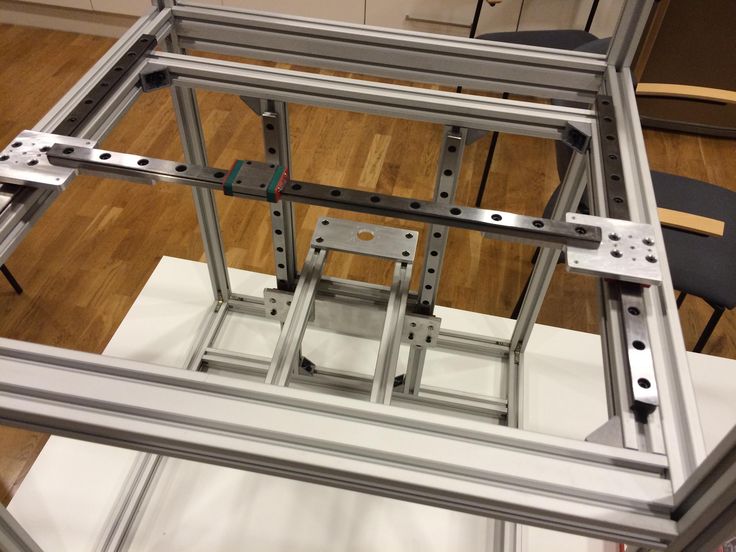 Click on the picture that corresponds to your printer to know how to swap the drivers:
Click on the picture that corresponds to your printer to know how to swap the drivers:
| How to change the extruder driver | |||
- Keep your printer and slicer updated to avoid bugs that could cause underextrusion.
- Use the recommended profiles to check if the problem is coming from the printing settings or the hardware.
- Keep your filament dry and correctly stored to avoid underextrusion issues related to the humidity.
- Adjust the temperature, reduce the printing speed below 50mm/s and avoid aggressive retraction settings.
- Clean your hotend each time that you need to change the type of material to avoid clogs.
- Keep the cooler fans free of dust or strings of filament.
- Remember to clean the extruder motor if you have experienced underextrusion issues.
- If you still experience underextrusion issues, get in contact with our support team.
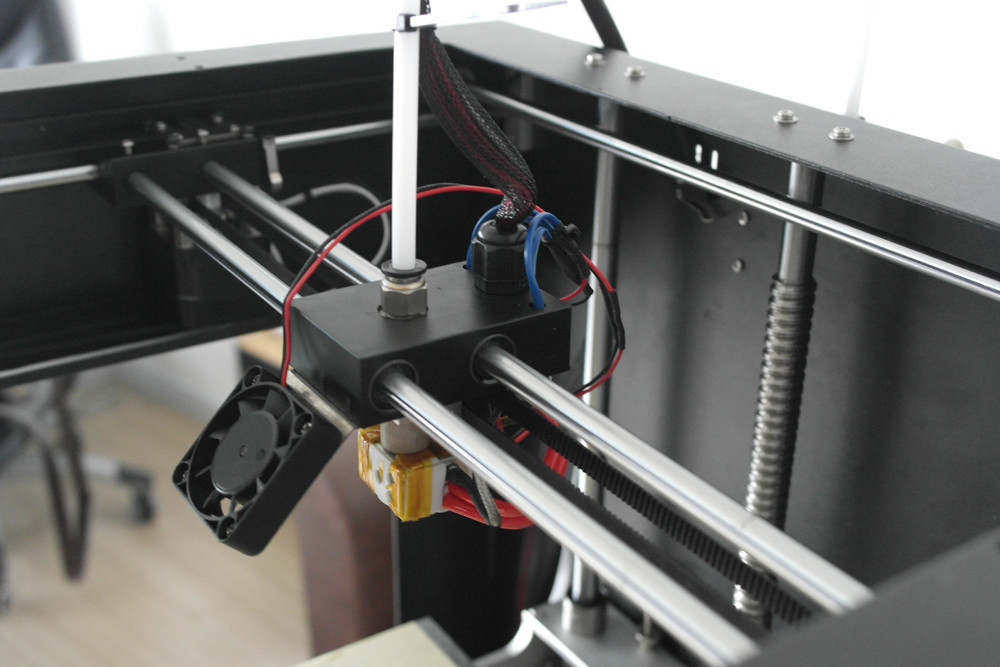
| Send us your comments about this article | |||
|
RELATED ARTICLES | |||
extrusion | Prusa Knowledge Base
Relevant for
:
MK2.5MK2.5SMK3MK3S
Last updated
10 months ago
This article is also available in following languages:
You can recognize under extrusion when there is material missing in your print’s layers. Printed objects with under extruded layers can be fragile and tend to break apart. There could be several causes to under-extrusion and you should also think if you recently did any changes to your printer (or perhaps no maintenance for a long period), as you might find the culprit there.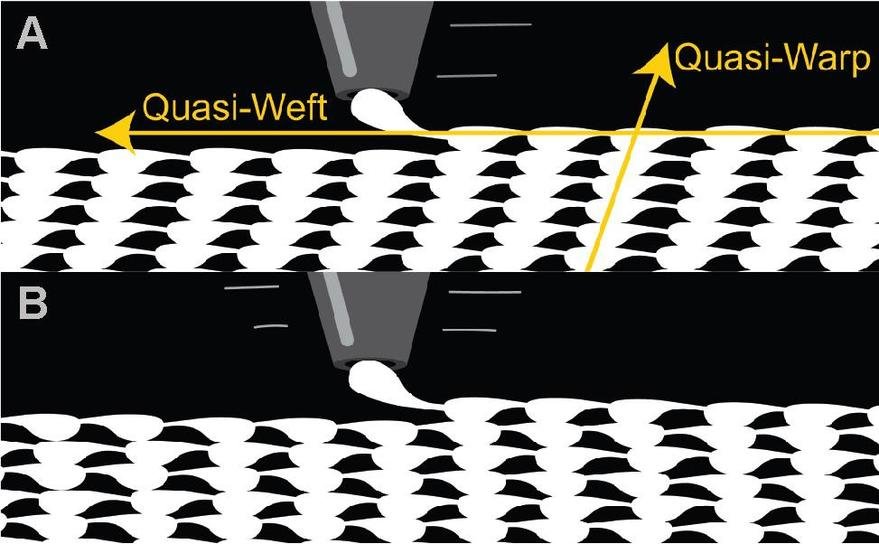
Example of severe under extrusion (left cube) and a normal print (right cube).
Common factors in under extrusions are:
- First layer calibration too close
- Slicer settings
- Nozzle
- Extruder gears
- Insufficient hotend cooling
- Filament
First layer calibration too close
Make sure you have performed the First Layer Calibration correctly. Avoid compensating for a lack of adhesion by squishing the first layer too much. If the nozzle is too close to the build plate, the filament can be obstructed from pushing through. We recommend running the first layer calibration every time you move the printer to a different location or do maintenance on the hotend, like changing the nozzle. Moreover, when you swap the steel sheet from the textured one to the smooth one you must recalibrate due to the sheet's different thickness. That is why we introduced the Steel sheet profiles.
Slicer settings
Each profile in the PrusaSlicer contains settings that determine temperature, speeds, and how much filament the 3D printer should extrude. The printer does not provide any feedback on how much filament actually leaves the nozzle. It can be that less filament is extruded than the firmware expects. If that happens, you may notice gaps in and/or in between printed layers.
The printer does not provide any feedback on how much filament actually leaves the nozzle. It can be that less filament is extruded than the firmware expects. If that happens, you may notice gaps in and/or in between printed layers.
Make sure you have set up your printer in PrusaSlicer by running the Configuration Wizard and as a starting point you should use the stock filament profiles which are tailored for your machine, filament type, and nozzle size.
Nozzle
If you had the nozzle removed from the hotend at some point, make sure it has been correctly reinstalled. Please see the dedicated guide for your hotend:
- Changing or replacing the nozzle (MK2.5S/MK3S/MK3S+)
- Changing/replacing the nozzle (MINI)
Incorrect installation can cause both clogging and leaks. The nozzle must be tightened when heated and there must be a gap between the nozzle and the heater block. Also, inspect the extruder and hotend for any damage, like the heater element or thermistor's wires or a bent heatbreak (only on V6 hotend).
If the installation of the nozzle is correct, then performing a Cold pull will often resolve a clog.
Using specialty nozzles
If you are using specialty nozzles like hardened steel or stainless steel, etc., you may have to increase the nozzle temperature when printing, usually within a range of 5-10 °C. Steel has different thermal properties compared to a brass nozzle, which can affect print results, mainly the inter-layer adhesion. But remember that higher temperatures can also lead to increased stringing. If the issue persists, try replacing the nozzle with the original 0.4mm brass nozzle and see if it makes a difference.
Furthermore, not all nozzle sizes will be suitable for all filaments. Filament that contains particles of wood or metal will most often be unsuitable for nozzles with a diameter below 0.4, and some will require an even larger nozzle, like 0.6 mm or 0.8 mm. For more information, please see Different nozzle types.
A 0.1 mm nozzle can be considered experimental; Its small diameter will not work with all filaments, the tolerances required in its manufacturing are hard to guarantee and the excessive printing time it requires can be beyond reasonable. For these fine resolutions, you may want to consider SLA printing.
Extruder gears
Check both Bondtech gears for any dirt or misalignment so they are able to push filament through. Please see Checking/re-aligning the Bondtech gear (MK3S/MK2.5S) for details.
Additionally, make sure that your printer’s extruder idler is at the correct tension. Having the idler screw too loose or too tight can cause under extrusion.
Insufficient hotend cooling
Controlling the "melt-zone" of the filament is very important. With insufficient cooling, the filament can start melting too far away from the nozzle. Check that your extruder fan is installed in the correct orientation and whether the fan is blocked by a piece of filament or some other debris.
Unless you have turned off "Fan check", the printer will give an error if it detects if either fan is not spinning when it should (hotend fan or print fan).
If you are using your printer in an enclosure, make sure the temperature inside is not too hot, as overheating can result in Heat creep, where the filament will start melting before it reaches the nozzle
Example of a blocked fan by a strand of filament.
The hotend fan will always spin if the nozzle is heated above 50 °C.
Filament
Too low or too high printing temperature can cause print issues as well. If your filament brand and type is not listed in PrusaSlicer, you can try to adjust the print temperature by +/- 5-15°C to see if this resolves the issue.
Some specialty materials, like Flexible materials, may require many adjustments and tweaks to print them successfully. Composite materials, like Woodfill filament, may require at minimum a 0. 6 mm nozzle, and 0.2 mm layer height to prevent clogging. If there are composite materials like kevlar or carbon fiber, a hardened nozzle is required.
6 mm nozzle, and 0.2 mm layer height to prevent clogging. If there are composite materials like kevlar or carbon fiber, a hardened nozzle is required.
Some filaments can also have a varying thickness, due to quality or infused materials like wood, which will cause unexpected changes in the volume of extruded filament. The industry standard of variations in diameter is +/- 0.05 mm.
Keep your filament dry, free of moisture because damp filaments have a negative impact on printing, especially soluble filament, PETG, and ABS. We highly recommend putting spools back inside their original bag when it’s not in use, along with a silica gel. We recommend storing your filaments in a dry area or ideally in a “dry box”.
Incorrect loading/unloading
When loading a new filament with a lower specified temperature, preheat the nozzle to the temperature required by the previous filament type you have used. In other words, always the highest temperature filament, as its remnants are most likely still in the hotend. For example, if you have printed with ABS or PETG and want to print with PLA now, load the PLA filament at the ABS or PETG temperature. This way, the newly introduced filament can push the old one out.
For example, if you have printed with ABS or PETG and want to print with PLA now, load the PLA filament at the ABS or PETG temperature. This way, the newly introduced filament can push the old one out.
Problem with extrusion? You are here / Habr
Do you know what a real universal fakap is? Recently, I fully felt it in my skin. I hope the text will be useful for novice 3D printers, since the problem is not an isolated one, but it was not easy to find a solution, and even I, an old atheist, almost believed in miracles. Forgive me for the presentation, since I am not a writer or a blogger, but a simple engineer - a firm engineer.
In addition, the text is intended for people with minimal experience with 3D printing.
Solely for the reason not to inflate the article and not explain the purpose of various details and slang words. I'll start with the backstory. A little less than a year ago I bought myself an inexpensive 3D printer. One of the most popular (not as advertising, but to make it clear what it is about) is Ender 3. The assembly was simple, there are many recommendations on the Web. Of course, assembling it according to the instructions, I would have received a non-working unit, but after “smoking the manuals”, I managed to complete the first test print for 5 plus for such a simple machine! Everything was fine up to a certain point. But then it began ...
One of the most popular (not as advertising, but to make it clear what it is about) is Ender 3. The assembly was simple, there are many recommendations on the Web. Of course, assembling it according to the instructions, I would have received a non-working unit, but after “smoking the manuals”, I managed to complete the first test print for 5 plus for such a simple machine! Everything was fine up to a certain point. But then it began ...
If you're interested, welcome.
For those who are too lazy to read:
The extruder pressure roller arm has broken.
The printer was needed for a specific task - printing non-standard cases for various small-scale electronic crafts. After I played enough with ready-made models and provided my daughter with various little animals and little men, I mastered FreeCAD “on top” and began to do useful things. Everything went well . .. By and large, the print was launched "from the foot", set it and went to bed. Unless the first layer controlled. But the first "bells" appeared.
.. By and large, the print was launched "from the foot", set it and went to bed. Unless the first layer controlled. But the first "bells" appeared.
Somewhere part of the layer will fall out, somewhere the plastic will burn. I calibrated the table “according to a piece of paper”, sinned on the plastic and the nozzle, changed the settings in the slicer, plastics and nozzles - the problems disappeared. Bye…
At one "wonderful" moment, I ran into an "insoluble" problem. The end of March, a smooth transfer to a remote location (I successfully moved from the Moscow region to Minsk 2 years earlier), I decided to assemble a separate computer for work from what I had. In the stash was a good motherboard, processor, a couple of monitors and 2 cases. One is a huge full-fledged ATX, the other is a barebone. I decided to collect in a small one, so that it takes up less space. The case is non-standard. With cradle for 1 CD drive and 3.5 inch hard drive. I found 3x 2.5 SATA SSD of small volume, for the system and one is enough "more than" and 1x for 1Tb 2. 5 HDD.
5 HDD.
All this "living creatures" was placed in a large building on a makeshift adapter from old bank cards. But, since a printer has already appeared, it would be nice to use it. I created a holder model, put it on print and went about my business. When I looked at how it prints, I saw only noodles ... From that moment on, the path of repair went, 2 months long. I will try to paint on the shelves, what helped and what did not, and what was the root cause.
Step 1 Adjusting the rollers {prevention is always good}
Once again, I set up the table “on a piece of paper”, launched it - the plastic does not stick. I changed the settings, plastics - without result. Instead of sticking to the table, it bends onto the nozzle. When I rechecked the nozzle gap settings, I found that the rollers were loose and the table had play by almost 5mm at the edges. It's strange how he used to print at all before ... It seemed that the reason was found. Adjusted. But it didn't get any better. With grief in half I printed the part, but the quality left much to be desired:
Adjusted. But it didn't get any better. With grief in half I printed the part, but the quality left much to be desired:
Obvious gaps in print are visible.
And here are the bundles…
Step 2. Song of Ze[l]de {not bad when everything goes like clockwork}
The first thing that came to my mind was the problem in the Z-axis drive. And all the advice on the forums on a problem similar to mine pointed to this. Took it apart and checked for smoothness. The nut bit the thread a little and found a “bug” in a couple of rollers. When moving without the drive screw, the "X" rail stuck a little for 1 turn of the roller. I ordered a drive nut, rollers (spare parts are always good, but that was not the point). Using the method of combinatorics and some kind of mother, I distributed the axle rollers according to the loads so that the defective ones had minimal effort. The "bite" is gone. Cleaned and lubricated the drive screw. Adjusted the position of his engine. As a result, a light touch of a finger is enough to lower the carriage down. The result is negative.
Adjusted the position of his engine. As a result, a light touch of a finger is enough to lower the carriage down. The result is negative.
Step 3. Slicer {tuning, but not solving the problem}
Updated slicer. Moreover, the new release just had an improvement related specifically to the print quality for my printer. Played around with flow and speed, layer thicknesses, etc. Even successfully printed some simple small cases and parts. But the settings were frankly wild: flow - + 10%, speed - -5%. Considering that after assembly, excellent printing was obtained at the “default” settings. The problem of printing complex parts has not disappeared ...
Based on this article: https://habr.com/ru/post/494058/ I made a brushing timer for my daughter. I am preparing a separate description for it. Spoiler: eight-legged controller, firmware - 119 assembler commands.
Step 3. Extruder {and happiness was so close...}
Logic dictates that since there are no problems with the geometry and drives of the axes, there must be something with the feed. Removed the filament feed gear and cleaned it. No visible wear is observed. I returned it to its place, slightly shifting along the flight, to even out wear. The result is 0. Eh, if I look a little to the right, I would save a month of nerves and $ 200.
Removed the filament feed gear and cleaned it. No visible wear is observed. I returned it to its place, slightly shifting along the flight, to even out wear. The result is 0. Eh, if I look a little to the right, I would save a month of nerves and $ 200.
Step 4. Checking the SD drivers {no comment}
Excellent geometry, no problems with the mechanics. At the time of the first assembly, everything was much worse. A bunch of studied materials, improvements and settings, and the result is zero. I do not believe in miracles, electronics remained. Moreover, members of the forum often complain about burnt drivers. It is clear that a completely burnt out shoulder of the bridge can be detected “by eye” immediately, I thought about a “floating” malfunction. After all, the plastic lays down normally, then - passes, the thread becomes thinner, hair and other charms. I ordered an improved control board on ARM, but in order not to waste time, I decided to check the existing one.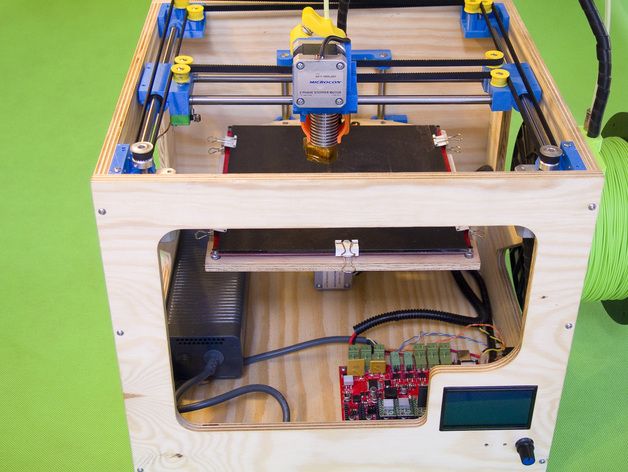 I removed the board, the Z-axis motor as an inductive load, assembled the stand on the table, set the temperature of the hot end with a resistor so that the extruder could be rotated. I looked at the waveforms on the SD coils. Everything is fine. He warmed the driver with a hairdryer (a crystal defect or unwelding sometimes manifests itself), mechanically acted on the driver IC, cooled propane with butane (gas for lighters). Note. It cools quite well to -20, it is not necessary to buy an expensive freezer for this. Everything is fine. Failures are not visible!
I removed the board, the Z-axis motor as an inductive load, assembled the stand on the table, set the temperature of the hot end with a resistor so that the extruder could be rotated. I looked at the waveforms on the SD coils. Everything is fine. He warmed the driver with a hairdryer (a crystal defect or unwelding sometimes manifests itself), mechanically acted on the driver IC, cooled propane with butane (gas for lighters). Note. It cools quite well to -20, it is not necessary to buy an expensive freezer for this. Everything is fine. Failures are not visible!
Step 5. Updating the firmware {and I almost believed in a miracle and conspiracy theory}
No, I am sure that miracles do not happen. There are bugs, glitches, tricks, lack of information, subjective perception of reality, after all. But not miracles! But how to explain that, with good mechanics and electronics, printing behaves extremely strangely? The Chinese made a bookmark in FW in order to additionally barry with boards? It is done elementarily, but, I think, they would have been discovered long ago and a white fluffy fox would have come to the trademark. Bug in the firmware? Everything is possible, only somehow it manifested itself strangely.
Bug in the firmware? Everything is possible, only somehow it manifested itself strangely.
EEPROM settings wrong or FLASH* "bugging"? Most likely. Okay, since the board is on the table, nothing prevents it from being reflashed. Updated to "vanilla" Marlin 1.1.9, collected everything back. The result is that the miracle did not happen.
*Purely theoretical substantiation of the possibility of connection of the problem with FLASH memory:
Let's say we have the following code fragment:
…
const uint8_t step = 0x18;
…
position += step;
…
At each iteration, the “step” setting is added to the current position. Since the program is executed on a microcontroller (MK), the code and constants are placed in ROM and can only be changed during an external programming procedure (we will omit the possibility of reprogramming the FLASH memory by internal means of the MK). This procedure is performed once by the manufacturer. Now 2 important points: the controller processor reads commands and constants from ROM every time, forget about caches, Atmega does not have them. That is, if the loop went through 1000000 iterations, then the constant was read the same million times. With each read, FLASH degrades a little. I don’t know what the critical reading threshold for NOR is, I think it’s tens of billions, but TLC NAND already degrades quite well after 10-20K readings ... The second point is not the fact that our narrow-eyed friends did not use rejected controllers. I actually got one like this. PICs. Not soldered, but there are strange marks on the case. FLASH was not erased, at 3.6V they did not want to be erased or flashed. I had to raise it to 5V, after which the recording / verification began to take place. Let's say our constant was written to a defective cell. While the device is new, 0x18 was read stably. But from time to time (and for Atmega, the guaranteed time for saving data is not the longest) and degradation, at some point it began to read not 0x18, but 0x08.
Now 2 important points: the controller processor reads commands and constants from ROM every time, forget about caches, Atmega does not have them. That is, if the loop went through 1000000 iterations, then the constant was read the same million times. With each read, FLASH degrades a little. I don’t know what the critical reading threshold for NOR is, I think it’s tens of billions, but TLC NAND already degrades quite well after 10-20K readings ... The second point is not the fact that our narrow-eyed friends did not use rejected controllers. I actually got one like this. PICs. Not soldered, but there are strange marks on the case. FLASH was not erased, at 3.6V they did not want to be erased or flashed. I had to raise it to 5V, after which the recording / verification began to take place. Let's say our constant was written to a defective cell. While the device is new, 0x18 was read stably. But from time to time (and for Atmega, the guaranteed time for saving data is not the longest) and degradation, at some point it began to read not 0x18, but 0x08. Not every time, but still. I know, rather than degrading 1 to 0, but vice versa, this is just an example. So, as long as the correct number is read stably, the movement occurs correctly, but when failures occur, an incorrect setpoint is added to the result, which leads to feed failures. This is the simplest and most unlikely example. There may be other glitches, for example, in the addition command, the source of R6 will change to R7. The assembler instruction remains valid, the processor will execute it, but the result will be incorrect ...
Not every time, but still. I know, rather than degrading 1 to 0, but vice versa, this is just an example. So, as long as the correct number is read stably, the movement occurs correctly, but when failures occur, an incorrect setpoint is added to the result, which leads to feed failures. This is the simplest and most unlikely example. There may be other glitches, for example, in the addition command, the source of R6 will change to R7. The assembler instruction remains valid, the processor will execute it, but the result will be incorrect ...
Step 6. Flush the “throat” {keep your head cool and the hot end clean, I recommend doing this immediately after buying a printer}
A gift from "heaven" was a link on one of the forums to a video from the manufacturer. There they honestly admit that not all hotends are equally useful, that is, they are well assembled.
Teflon tube not fully pressed in, cut uneven. The consequence is the formation of a cork and the extruder cannot normally advance the plastic. Here it is - my case!
Here it is - my case!
Abnormal flow and retract values, everything converges. Despite late Saturday evening and a visit to a brasserie, I decided to check it out. Exactly. Guana is unmeasured there, right down to the remnants of the plastic that I used to print a month ago (the same green holder). Very likely to win! I cleared the “throat”, cut the tube evenly, pressed it in as far as it would go, also fixed the second end of the tube more tightly, many people use electrical tape, but I wound a little 0.7 wire, which allows you to freely unscrew the holder:
And here is the “killed” end of the tube, you can see that it was cut crooked:
The model is cut into layers with default settings. The seal ... The border went, the contour went, there is no snot during the retract. Hooray!!! Victory!!! I was about to write an article so that others would not suffer, but ... A complete fiasco. Thinning and tearing of plastic, gaps in printing. Already ready to give up. The wife encourages, but you throw it away, buy a new one! I can't do that. There must be a reason. That's just where??? There were no more reasonable (and censored) thoughts ...
Remark about cleaning the “throat”:
All operations with the hot end are done only “hot”, otherwise there is a chance to break everything. After warming up, the first step is to remove the nozzle and clean it from the remnants of the “cork”. I did this by heating the nozzle on a gas stove flame and carefully removing the plastic. Didn't clean the inside. Then, also on a heated hot end, the tube clamp is unscrewed. He can only move up. After retracting the latch, the tube should be gently but with force removed from the “throat”. We remove all the latches, since the damaged end still cannot be saved, carefully, back and forth, we clean out all the dirt, constantly removing it from the tube. As a result, the tube should easily pass through the throat through and through. The assembly was performed by the FIFO sequence. First, I installed the nozzle, then the tube clamp in the hot end, but did not tighten it completely, leaving about 1 turn. The worn part of the tube is cut off at a right angle and inserted into the throat as far as it will go. After that, the holder is tightened and the second one is installed, on the opposite side of the "teflon".
Step 7. Feed Calibration {with good mechanics, most likely not needed unless after replacement of drive parts or flashing}
In the instructions for upgrading to the "vanilla" Marlin, it was said that for the factory printer all settings are ideal, but the accuracy of the plastic feed may be slightly off. Okay, let's calibrate. He pulled out the plastic, warmed up the hot end (there is a lock in the firmware, it does not allow you to move “E” to a cold one). I unscrewed the tube from the feed mechanism, cut the plastic flush and executed the 300mm extrusion command. I have a ruler at 350. Extrusion lasts long enough, upon completion, I measured the length of the released filament and could not believe my eyes 226mm. I understand the difference of 3-5%, but not 25%! I'll try another plastic...
Note. I saw how the feed is regulated according to the marks on the bar marked with a marker, But with cutting, IHMO, more precisely.
Preparation for test extrusion:
After extrusion:
We measure with a ruler, in my case (after repair) it turned out 292mm. Next, go to the menu: control / motion / step mm, see how many steps per mm are set for the extruder. In my case it is 93. Let's do a simple calculation:
>>> (300*93)/292
95.54794520547945
Change the setting and save the setting. Re-extrusion - error at the measurement level.
Step 8. Victory!
At first I checked for PETG, I decided to change to PLA. The first one I overheated a little during drying, I attributed the inadequate spread to possible sticking on the coil. Cutting, extrusion. And nothing. Plastic is not supplied at all. The axis of the drive rotates slowly, but the screws show that there is movement. I looked, the bar did not lie correctly between the gear and the pressure roller. Okay, I'm correct. That the roller dangles a little. Gotta pull it up. And fig! Here he is the culprit of all my troubles:
The pressure roller arm is cracked. At the same time, the clamping force remained sufficient for partial advancement of the rod. Gear marks remained and the pressure roller rotated.
Accordingly, all games with the pressure spring setting were unsuccessful. The slips of the bar were invisible to the eye, and the crack could not be seen on the assembled mechanism. All! Engineer's ecstasy received! The lever was glued together, an aluminum mechanism was ordered, a spare was printed just in case (if it breaks while I wait for a new one). Here is a link to the model. Of course, it’s unpleasant to spend so much time and money over such a trifle, but it helped me dive much deeper into the processes of printing and catching glitches.
Actually, the first part after repair. Clamping lever:
Finally, my presence sensor found a "face". The case was printed even before the breakdown:
Attempts to print a “face” on a faulty printer (after cleaning the “throat”):
I hope this material will help at least someone not to make so many stupid attempts to find a primitive malfunction and save money. Of course, I did not deal with the problem every evening, but in total - a day, probably, was spent. For the money - about $ 200 for parts. The price of troubleshooting is 15 minutes and a couple of drops of "superglue". It's a shame? Rather not, because the experience and spare parts will remain with me!
Smooth printing and excellent adhesion everyone!
Answers to questions about underextrusion
- Prusa i3MK3S+ polycarbonate layer skipped (overheated?) On the last two polycarbonate prints with my Prusa, one or more layers were completely skipped (i.
e. material was not extruded). Otherwise the print is fine, except...
- Air seal/jam halfway to making a raft For a school project, my teacher gave me a brand new longer 3D printer to create the parts. After one good job, the printer can't get past creating a raft without an air print.…
- Ender3 under-docking I'm having trouble with Ender 3. I've been printing for almost a year now with good results. Then suddenly the fan started to make noise and the prints turned out to be clearly bad. From what I understand looking around...
- Ender 3 fails at the same z position every time it prints I have an Ender 3, I changed its extruder to a metal extruder. In my latest prints I am getting problems at the same height. The extruder cannot retract the filament for this z position. I cleaned up the Z axis,…
- Are the print seams underextruded resulting in large pits/gaps? (Prusa Mk3+, Prusa Slicer) The seams on my print are much larger than they were a few months ago and I don't know what's going on or how to fix it.
Photos with seams randomly: Lined seams: I…
- What could be the reason for underextrusion in some areas? When I print the gcode repeatedly, the extrusion happens in the same place. Underextrusion occurs not only on the first layer. I noticed that part of the second layer was also not extruded, but not in that ...
- Under extrusion problems I have a problem with what I consider to be under extrusion (see attached photos), but I would like to ask you if my assumption is correct. If it's underextrusion, could you...
- Accidentally underextruded/overextruded small part on CR-10 I'm printing pretty cheap but highly rated PLA and not sure if it's underextrusion or overextrusion; but it just looks uneven and not clean. My settings: 195°C at…
- Printer extrudes too little filament at start and end of extrusion I bought a new type of filament (GreenTEC Pro Natural) for my Anycubic Mega i3 to print some food safe cookie cutters.
Now I changed the print settings to…
- Why does the 3D printer stop extruding PLA? I have an Ender 3 V2 that is about 6 months old. Recently the extrusion slowed down almost to a complete stop a few seconds before the print for no apparent reason. The extruder works great at…
- No thread in Z seam The object on the right is a basic C-channel, the outer surface should be smooth, but the first ~5 mm of thread is missing after each layer change. In this example, the missing thread is enough...
- Evenly spaced bumps and one spot of localized underextrusion I have two separate problems. One is specific to this particular model, the other is on all my prints but is more pronounced on vertical walls at 9 angle0°. The first problem is…
- Curious case of Ender 3 Pro extruder skipping/clicking resulting in underextruding after moving the printer to another location I've been using the Ender 3 Pro (my first printer) for almost a year, and until a month ago it was working fine ( there were some hiccups, but nothing I couldn't deal with in a day or two).
A month ago I…
- Under extrusion on half of 3D print - Dremel 3D45 -PETG NEW UPDATE BELOW I'm having trouble finding the cause of this under-extrusion at the start/end of each layer. Something changes halfway through printing, creating a visible seam on...
- Ender 3 Pro: Flow rate drops over time I must set the print flow setting very high (up to 180% or more) or I will get insufficient extrusion. I've also noticed that from time to time I have to...
- Massive drops/under-extrusion/"pearl necklace" only after the first few coats (Ender 3 V2) I'm struggling with a problem. Long story short: I managed to set up my Ender 3 V2 in such a way that the first few layers print (almost) perfect, but after the first few layers (I don't know for sure, but,…
- Removing Stubborn Partial Clogs After Printing Nylon My Prusa i3 MK3S was partially clogged the last time I printed with nylon. Although I've experienced clogs and partial clogs before, all the usual tricks I've tried don't work this time.
.. print time. I use a standard 0.4mm nozzle with 1.75mm PLA and use Cura as a slicer. …
- CTC i3 fine Y-axis / no filament welding I have this CTC i3 printer; when I print square test prints it moves along the y-axis back to zero (front). It draws lines, but very thin or none at all. But…
- Inconsistent calibration test results E-step My Ender 3 had intermittent extrusion problems. Layers of good density alternate with a weak mesh. When printing multiple objects at the same time, sometimes one of them will be almost...
- Ender 5 Pro print quality problem I received my Creality 3D printer 1 day ago. My dog from the SD card came out perfect, Benchy was printed almost flawlessly too. I've used the standard Benchy settings on all of my...
- Patterned under extrusion on Ender 3 Pro I've had my Ender 3 Pro for a few months and it worked great. Then, after a failed print (the STL had extra seams that ruined the print), I started.
..
- Layer Skip Ender 3 v2 I'm having some issues with my printer skipping/not extruding random layers of my prints. This happens in several layers, and sometimes does not even affect the entire layer. I…
- Is it possible to add variable extrusion widths to models with different wall characteristics? (Simplify3d) I have a problem with the new "thin features" solution in S3D. The model I want to print has some tapering thin walls, but also some thicker parts. I want…
- Underextrusion near seam I have a FLSUN QQ-S Pro and I'm trying to print a thin wall only part with PLA. I'm using the Cura 4.8.0 profile, "FLSUS QQ-S". Unfortunately there are signs near the seam...
- Ender 3: extrusion not working properly I have a new hot end for my Ender 3. When I start 3D printing everything seems to be going well. After about 20 minutes or so, the extrusion stops and the motor…
- Ender 3: power issues, insufficient extrusion, missing steps My Ender 3 started having printing problems.
It doesn't seem to be getting enough power. I cleaned the hot end, checked the PTFE tube seat, replaced the nozzles. It lacks motor stages...
- Flashforge Adventurer 3 PETG under extrusion after fast travel I recently started 3D printing and had great success with both PLA and ABS. Now I'm trying to make some parts for which I think PETG is the right material. However, I ran into…
- Ender 3 V2 extrusion problems Every time I start to print, halfway through the print my printer starts not extruding enough. I have tried many different models every time this problem occurs...
- CR10 V2 extruding and heating too fast The heater cartridge on my CR10 V2 broke so I ordered a new one (12V). After replacing it, the new one heats up very quickly past the target temperature and slowly drops to the target temperature. How…
- I can't print anything! Is it creeping heat? (Detailed explanation and photo) I bought Ender 3 Pro in November.
I loved 3D printing and even upgraded my machine to improve my experience. However, lately I can't print anything due to a problem that I can't...
- Ender 3 v2 Printing Problem Last week my printer worked very well, but after printing it started having some printing problems. The printer stops extrusion in the middle of printing or under extrusion. After…
- String first layer (possible extruder issue?) This is my first 3D printer, so I'm not entirely sure what could be causing this issue. I recently bought a SUNLU S8 3D printer and tried to print the first test file, but the layers…
- Direct extrusion vs. Bowden extrusion when printing under temperature fluctuations I have a Bowden extrusion printer in my garage. (PLA print stinks and nothing I don't want to be exposed to for a long period of time!) I encased the printer in a plastic sheet…
- Strange temperature chart and heat run protection I woke up this morning with my 20 hour print failing at about 3 pm.
I checked the octoprint console and saw a very strange temperature graph. Later it turned out that it worked...
- The top layer and walls have gaps even at 120% flow (Cura) I print on a Geeetech A20 printer, PLA. I started printing the same test pattern by changing the following settings: Temperature from 215 °C to 195°C (5°C reduction per print) Multiplier…
- Ender 3 underextrusion I'm new to 3D printing and recently bought an Ender 3. With the filament included, my first print was flawless. However, after the first print, I tried to print with ABS, which is not...
- Ender 5 does not extrude the layer did not stick to the table. I looked…
- When extruding on one side, but only when printing support material Attempted to print a pliers bracket, but support material on the left side always fails when extruded. Model is symmetrical from left to right so support is the same for...
- Ender 3 Pro Extreme Underextrusion I'm having some serious extrusion steps and can't figure out what's going on.
I replaced all metal extruder with one I also replaced all bowen fittings and tubing with Capricorn,…
- Underextrusion Prusa i3 I have a Prusa i3 3D printer and use Slic3r for slicing. I have noticed that my extruder is not extended enough. I set nozzle diameter and filament diameter correctly and have already tried...
- Printing fails randomly resulting in hairy mess TL;DR; My original answer fixed this issue for a while, but it still keeps happening... (See Update 2 below) Original question body: Printing fails...
- Weird stringing activity when printing face shields I'm printing Prusa COVID-19 folded shields on a modulated Ender 3. This works pretty well until the second layer of masks where we get this weird stringing-like effect. It looks like…
- Monoprice Maker (Wanhao Duplicator Clone) Intermittent Underextrusion I've had Monoprice Maker (Wanhao Duplicator Clone) for about a year and a half now.
I type in a closed chamber and have had a lot of issues with this in the past (all sorts of random issues) that I…
- First diagonal filament 3D print I just bought a Creality Ender 3 yesterday. Installed it and ran a test print of a dog. Photo below. I used the sample filament that came with the printer. I'm not 100% sure what it is, but...
- Partial underextrusion in the walls I'm encountering strange underextrusion "pillars" on the outer walls of my XYZ test cube. In the pictures below, I printed PLA test cubes with a 0.4mm nozzle, 0.2mm height, and a temperature of…
- Monoprice select mini under extrusion? Can someone please look at the picture and tell me what to try to fix, the threads are full of little gaps. Layers that are hard below the filaments have a tiny...
- Consistent blurring and gaps in print towards the right side Question: I have a problem with some clumps and spaces consistently in the same areas.
Learn more


